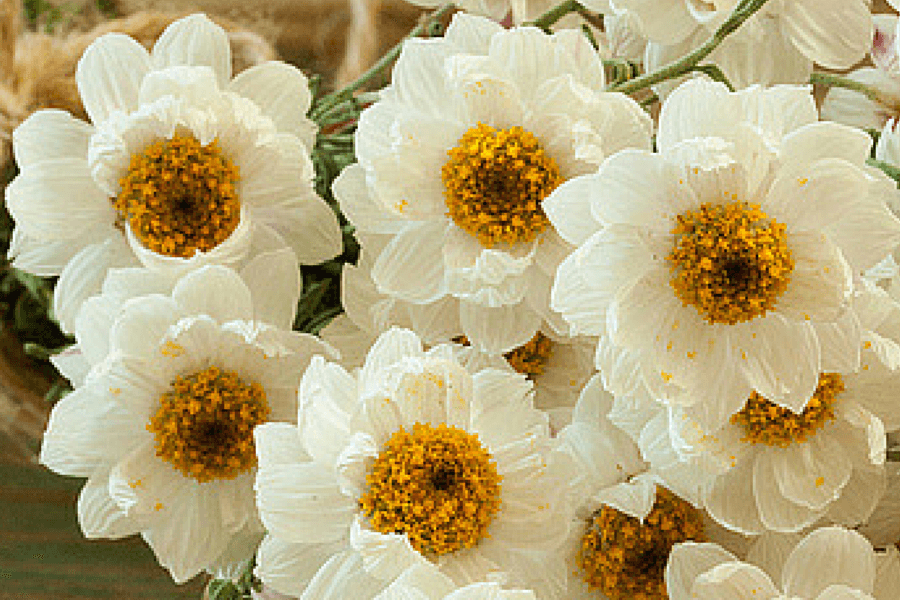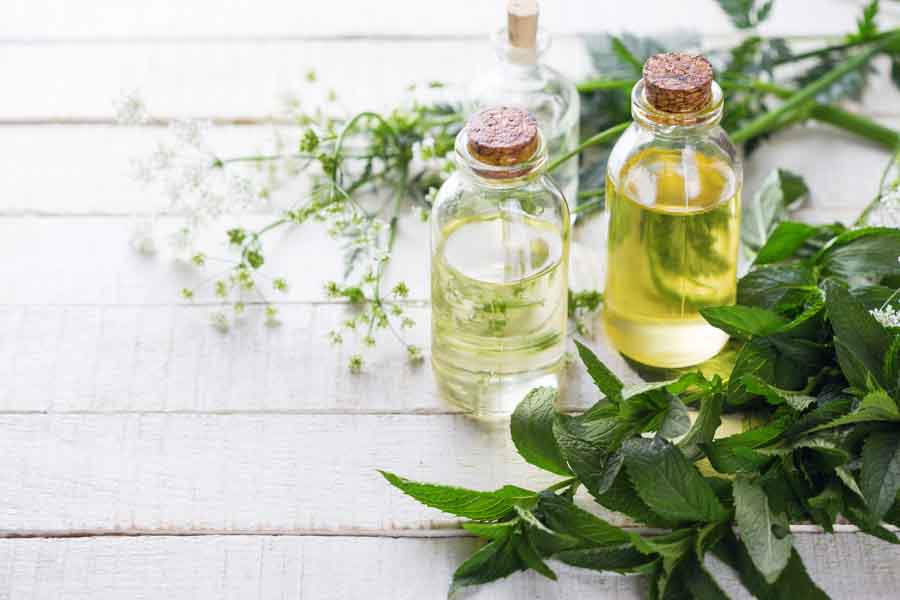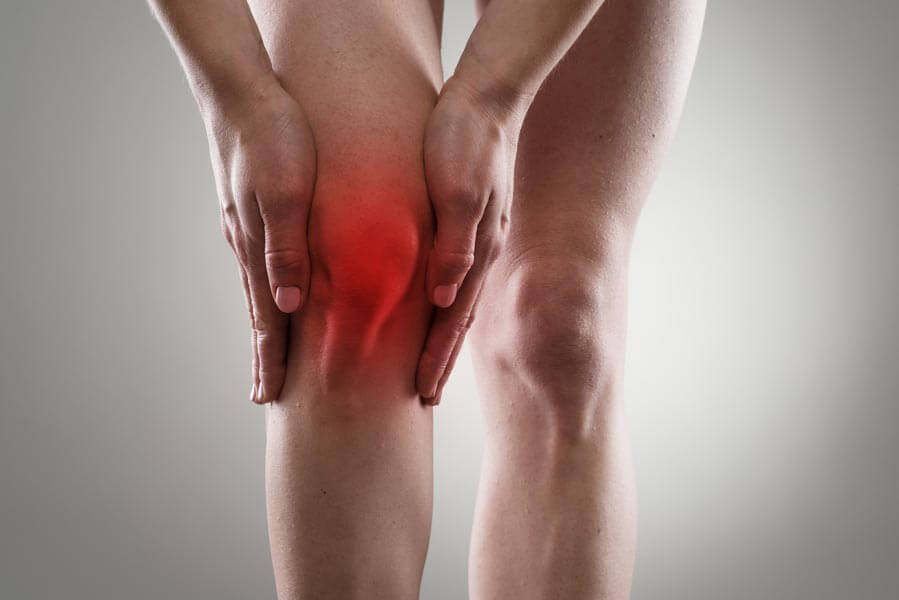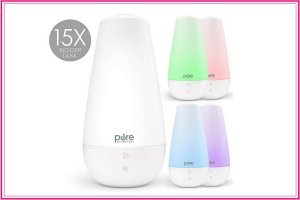
If you’re ever in need of a warm, uplifting oil with excellent healing properties, helichrysum oil is a great one to look to
. Extracted from golden-hued flowers, this oil is aptly described as having a sweet, warm, honey-like aroma. Though not very well known compared to other popular oils, it’s many attributes for health and wellness make it one of the most useful essential oils – particularly for inflammation, scars, wounds and bruises.
Helichrysum oil boasts of a variety of uses – from being great for the skin to preventing many disorders. In this article, let’s talk about its origins, uses and how it can help improve your health.
Origins and history of helichrysum oil
Helichrysums aren’t very attractive flowers, but who would have thought that these plain strawflowers could yield a valuable oil for healing skin ailments and other conditions? Probably due to its unlikely source, helichrysum oil is a relative newcomer to the field of aromatherapy. Various mentions of the flower though, are found throughout several cultures. The name itself is derived from two Greek words: “helios” meaning sun, and “chrysos” meaning gold. These terms pertain to the flower’s golden yellow color, and are aptly named too, since it is classified under the same family as sunflowers.
Like many other aromatic herbs, helichrysum is native to the Mediterranean. Certain accounts have mentioned its use by the Greeks as an herbal medicine since the ancient times. The plant is also one of the herbs used in South African traditional medicine for healing wounds, aches and pains.
Turkish folk medicine records the use of helichrysum as a remedy for bloating, apparently by promoting urination to eliminate excess body fluids. It was also used to relieve gas pains and other stomach problems.
In Italy, helichrysum is added to certain sauces for obtaining a “curry-like” quality, and has a flavor akin to rosemary but is more subtle. It has been used in various Mediterranean regions such as Spain, Turkey, Italy and Bosnia and Herzegovina throughout history for its healing properties.
This plant is also known by other names such as “everlasting” and “immortele,” probably because its flowers preserve their original form and color even when dried, and can last for a long time. This is why they are commonly used in garlands and for decorative purposes.
Source and composition of helichrysum oil
Helichrysum oil comes from the fresh flowering tops of Helichrysum italicum (also referred to as helichrysum angustifolium), family Asteraceae. Though there are over 600 species of helichrysum, this species is the most ideally used for obtaining helichrysum oil. At a certain time and climate, mainly in
June and July, the flowers give off an herbaceous honey-like scent. This is when the flowering tops are harvested and subjected to steam distillation to obtain the essential oil.
Helichrysum’s plain yellowish flowers make it very unassuming, yet its essential oil is more costly than most other oils. This is mainly due to its very minimal yield of about 0.2-0.3 % by weight — meaning that one ton of the flowering parts will yield only about two to three kilos of the essential oil after steam distillation.
Helichrysum oil has a distinctly fruity and honey-sweet scent, and its color ranges from pale yellowish to orange. The oil mainly consists of alpha-pinene, gamma-curcumene, neryl acetate and italidiones, which are the compounds responsible for its many benefits.
What are some benefits of helichrysum oil?

Helichrysum oil may not be the most popular essential oil, but you can be sure that it offers a wide range of benefits for health. Its sweet, nectar-tinged scent makes for a warm and uplifting property which can help emotional health and keep negativity at bay. Studies have shown that it has potent antioxidant properties, mainly due to the bioactive components found in the oil. Several of its compounds are also responsible for its anti-inflammatory and antibacterial actions, making it great for a variety of ailments. It also boasts of excellent skin healing and rejuvenating properties and can be used to treat various skin disorders. Read on to find out about how this remarkable oil can help target certain ailments.
Specific benefits of helichrysum oil
- Wounds and cuts – Helichrysum oil’s antibacterial properties make it an excellent application for wounds, cuts, abrasions, and stings. It helps to keep these injuries safe from microbial growth and speeds up wound healing. You can add it to other essential oils with a balm or salve as a base to apply to skin wounds and injuries.
- Skin & fungal infections – Fungal growth on the skin can cause some skin irritations and infections. Studies have found that helichrysum oil’s components can target and treat such fungi. You can make a blend of helichrysum oil along with tea tree and other antifungal oils, dilute with a carrier oil, and apply to skin areas prone to fungal infections.
- Promotes liver function and detoxification – The liver is the main organ for removing various toxins in the body. Thus its purpose is important to maintain proper health. Various cultures have used helichrysum oil since the early times to support liver function. It can help treat liver ailments and promote detoxification from heavy metals and harmful chemicals. It also stimulates the release of bile to help promote easier digestion and proper food metabolism.
- Helps treat acne – Helichrysum oil’s antibacterial properties make it an excellent treatment for acne. It acts in two ways – its antibacterial action kills off bacteria that accumulate in skin pores, while its anti-inflammatory action helps prevent swelling of the pores into pimples and acne. It is also more gentle than chemical acne medications and does not leave the skin dry and irritated.
- Soothes skin conditions – Helichrysum oil has been found to ease many skin irritations such as dermatitis, eczema, and psoriasis. It also relieves itching from insect stings and bites. You can mix a blend of helichrysum and lavender in a carrier oil or balm to apply to rashes, itchy areas, and other skin irritations. You can also add it to a bath to relieve itching from a large bodily skin area.
- Treatment for scars – When applied to skin injuries, helichrysum oil can help minimize the appearance of scar tissue. Its skin rejuvenating properties can also tone down blemishes, making it an ideal oil for skin care. Plus, it is also useful in preventing age-related skin issues wrinkles and sagging. Such actions are due to its ability to promote healthy skin cell renewal and stimulate collagen fibers to repair any tissue damages. You can add it to your regular skin toner or moisturizer for smoother, glowing skin.
- Eases inflammation – Helichrysum oil’s anti-inflammatory effect derives from its ability to block enzymes that cause inflammation and its ability to mimic potent anti-inflammatory compounds called corticosteroids. This action can help lower inflammation in the body that leads to various diseases over the long term. It can also be applied to inflamed joints and limbs to soothe swelling.
- Promotes cardiovascular health – Helichrysum oil can help in managing high blood pressure. Its ability to promote smooth muscle function and ease inflammation in blood vessels dramatically contributes to its use in supporting cardiovascular health.
- Boosts digestive function – Helichrysum extract has been used traditionally to cure various ailments of the gastrointestinal tract. It helps stimulate the release of gastric juices, promoting the efficient breakdown of food. Additionally, it has been found by researchers to ease digestive spasms. In the form of herbal tea, it can treat pain due to indigestion, cramping, intestinal ailments, and other stomach-related disorders.
- Skin protectant and can ease sunburn pain – The pain related to sunburns is due to the loss of moisture in the affected skin area. Helichrysum oil can promote skin hydration to help relieve sunburn pain. It also can block out harmful UV rays that can cause cancer and skin aging. An easy formulation is to mix a few drops of the oil with some coconut oil and apply on sunburns to help in hydration and skin cell turnover.
- Analgesic – Helichrysum oil has been found to ease muscle pain by its ability to decrease swelling, relieve cramps, and promote blood circulation. It can also be used to treat muscle, nerve, and joint damage. Conditions like arthritis, rheumatism and sports injuries can be treated with the oil as supportive therapy. It can be blended with other oils such as lavender to relieve pain and
- Lessens pain-related chronic conditions. For pain relief, it’s best to massage the diluted oil directly onto the affected area. Chronic body pains can also benefit from a massage or a hot bath containing about 20 drops of helichrysum oil.
- Treats respiratory ailments – Helichrysum oil is said to provide warmth to the respiratory system. Such an action helps relieve throat itchiness and coughing. It is also an expectorant which also loosens up phlegm and prevents further deposition. Inhalation of the oil can help promote respiratory function by preventing bacterial and viral infections from developing.
- Relieves tinnitus – Tinnitus, also known as a ringing in the ears, is a condition that affects about 20 % of the population at one point in their lives. Tinnitus can be caused by various underlying conditions like noise-based hearing loss or improper inner ear circulation. Reports from patients say that regular use of helichrysum oil has shown beneficial effects for tinnitus. Such effects may be due to its ability to constrict the blood vessels that press on the nerves responsible for regulating certain hearing functions. You can use helichrysum for tinnitus by placing a few drops on a cotton ball. Place this cotton ball loosely on the outer ear and leave overnight. You can also mix a blend of helichrysum and juniper oils in a carrier oil of your choice, then regularly massage outside the ear.
- Reduces cancer risk – Research has found that the flavonoid content of helichrysum can help prevent cancer by combating oxidative stress in cells. Studies have also shown its ability to protect against DNA damage and cell mutation caused by radiation.
- Alleviates nerve pain – Neuralgias, commonly known as nerve pains, are quite bothersome since they are sharper than muscle pain and are more difficult to bear with. Helichrysum oil can help relieve nerve pain arising from sciatica, neuritis and other neuropathies. Application of the oil along the painful nerve area relieves swelling and promotes healing.
- Can help prevent and treat candida infections – Candida albicans is a fungus that causes various problems in the gut and other body systems. A specific scientific review of several clinical studies found that helichrysum oil’s bioactive compounds were able to combat the overgrowth of candida.
- Helps release negative emotions – Helichrysum oil’s warm, uplifting scent is useful whenever you feel sad or overburdened. It helps chase away feelings of anxiety and depression by inducing a calm, positive ambiance. It has also been said to help heal deep emotional wounds. To get its uplifting benefits, a few drops of diluted helichrysum oil to your solar plexus (the area below your breastbone). Massage in a circular motion and inhale profoundly using slow, deep breaths.
- Helps relieve bruises, hemorrhoids, and other blood vessel injuries – Helichrysum oil has been found to have a phlebotonic property, as well as an ability to help prevent blood clots. Such actions can be effective in healing bruises, hemorrhoids, and other injuries relating to blood vessels. For bruises, you can apply helichrysum oil directly to allow for faster healing. For hemorrhoids, use a cotton ball containing a few drops of the oil. Since hemorrhoids are dilated veins with pooled blood, helichrysum oil
- Can be used as an excellent treatment. Aside from promoting healing, this can also help decrease the pain and swelling.

Recipes and applications for helichrysum oil
Helichrysum oil’s benefits for health, beauty and emotional wellness can be obtained in a variety of ways. Here are some ways you can easily incorporate this sweet-scented oil into your daily routines.
Simple Tips
- Add a drop or two to your favorite toner or moisturizer to fight off blemishes, wrinkles, and sagging skin.
- Place 10-20 drops in the bathwater and soak in it for at least 10 minutes to relieve muscle and nerve pain. This also helps you relax and chase away any anxiety and negativity.
- Massage 1-2 drops of the oil directly onto scars.
- Inhale a few drops rubbed between palms to ease anger, frustration, sadness or other negative emotions.
- Run a few drops through your diffuser to set a joyful mood.
- Inhale a few drops from a handkerchief or personal inhaler to ease a cough, phlegm, congestion, and an itchy throat.
Anti-inflammatory massage blend
Ingredients:
- 4 drops helichrysum EO
- 2 drops myrrh EO
- 6 drops ginger EO
- 6 drops German chamomile EO
- 7 drops patchouli EO
- 7 drops ylang-ylang EO
- 2 ounces carrier oil of your choice, such as fractionated coconut oil, grapeseed or avocado oil
Directions:
- In a clean, dry pump bottle, add together all of the essential oils.
- Mix and blend by gentle shaking.
- Add in the carrier oil in portions, shaking the bottle gently after each addition.
- Once you’ve mixed in all of the carrier oil, you can now use this blend by massaging onto inflamed muscles, joints or other swollen, painful areas.
Scar and stretch marks scrub
Ingredients:
- 12 drops helichrysum EO
- 8 drops patchouli EO
- 1 tablespoon rosehip oil
- 2 ounces brown sugar
- 1/2 teaspoon lemon juice
Directions:
- In a small, dry bowl, mix helichrysum, patchouli and rosehip oils. Mix well.
- Place the brown sugar in another bowl. Add the oil mixture in portions, mixing the sugar after each addition to make sure that the oils are evenly distributed.
- Add the lemon juice in portions, again mixing after every addition.
- Store in a tightly-lidded jar. To use, apply on stretch marks and old scars, leave on for a few minutes, then wipe with a warm moist cloth or rinse off with warm water.
Bruise-healing blend
Ingredients:
- 4 drops helichrysum EO
- 7 drops German chamomile EO
- 5 drops wintergreen EO
- 2 drops lemon EO
- 1 tablespoon rosehip oil
- 1 tablespoon tamanu oil
Directions:
- In a glass bottle (preferably dark-colored), mix all of the essential oils.
- Mix in the rosehip and tamanu oils. Shake the mixture well for about two minutes to ensure adequate blending.
- Store in a dark place. To use, massage a few drops on a bruise, preferably followed by a cold compress. Repeat 3-4 times a day until the bruise heals.
Scar-away blend
Ingredients:
- 16 drops helichrysum EO
- 16 drops frankincense EO
- 8 drops geranium EO
- 4 teaspoons tamanu oil
Directions:
- In a small roller bottle, mix the three essential oils.
- Add the tamanu oil in portions, shaking or mixing after each addition.
- Put back roller-ball lid, and apply to scars three times a day.
Helichrysum astringent toner
Ingredients:
- 10 drops helichrysum oil
- 1 teaspoon witch hazel
- 1 cup chamomile tea
Directions:
- Mix all ingredients in a clean, dry bottle.
- To use, place a small amount on a cotton ball and massage over face, avoiding the eye area.
- Discard any remaining mixture after 2 weeks.
Migraine relief inhaler blend
Ingredients:
- 3 drops helichrysum EO
- 3 drops sweet marjoram EO
- 3 drops peppermint EO
- 2 drops basil EO
- 2 drops lavender EO
- 2 drops Roman chamomile
Directions:
- In a small glass container, blend all of the essential oils.
- Place drop by drop into your inhaler.
- Inhale whenever a bad headache strikes.
Blend for flawless legs (helps treat varicose veins and spider veins)
Ingredients:
- 3 drops helichrysum EO
- 3 drops grapefruit EO
- 3 drops tangerine EO
- 2 drops frankincense EO
- 5 drops bergamot EO
- 5 drops geranium EO
- 9 drops cypress EO
- 2.5 ounces jojoba oil
Directions:
- In a clean, dry pump bottle, drop in all of the essential oils and shake well to mix.
- Add the jojoba oil in portions, shaking well after each addition.
- Store in a cool, dark place. Apply 2-3 times a day on spider veins and varicose veins.
Skin restoring serum
Ingredients:
- 7 drops helichrysum EO
- 7 drops carrot seed EO
- 6 drops calendula EO
- 1 teaspoon rosehip oil
- 1 teaspoon tamanu oil
- 1 teaspoon apricot kernel oil
- 1 teaspoon macadamia nut oil
Directions:
- In a dark-colored glass bottle, add in the three essential oils and shake to mix.
- Add in the rest of the oils one by one, shaking after each addition.
- Store in a cool, dark place. To use, apply 3-5 drops onto damp skin after cleansing and toning.
- Wait about five minutes for it to be well-absorbed before applying additional moisturizer or cosmetics.
Soothing After-sun serum
Ingredients:
- 12 drops helichrysum EO
- 12 drops lavender EO
- 6 drops peppermint EO
- 2 tablespoons pure aloe vera
Directions:
- In a clean, dry bottle or jar, mix all the essential oils.
- Mix in the pure aloe vera, making sure that the oil mixture is evenly blended in.
- To use, apply to the skin after overexposure from the sun for a soothing and hydrating effect.

Skin repair formula (great for irritations, psoriasis, and eczema)
Ingredients:
- 4 drops helichrysum EO
- 4 drops Roman chamomile EO
- 8 drops frankincense EO
- 2 tablespoons shea butter
Directions:
- Melt the shea butter over gentle heat using a double boiler or simply in a container placed in a bowl of hot water.
- Once the shea butter melts, mix in all of the essential oils. (If you used a double boiler, make sure that the shea butter isn’t too hot before adding in the essential oils, as these may volatilize)
- Store in a tightly-lidded jar. Apply to the affected areas daily.
Things to keep in mind when using helichrysum oil

Helichrysum oil is generally safe to use. If you have super sensitive skin though, it’s best to do a patch test first to make sure that it doesn’t cause any skin irritation. Also, if you’re pregnant, breastfeeding, have epilepsy, or other medical conditions, be sure to consult your health care practitioner before using any essential oil.
If you have recently undergone surgery, are prone to hemorrhaging, or are scheduled for surgery in the next few weeks, its best to avoid using helichrysum oil due to its anticoagulant properties. This means that it can increase your risk for bleeding and internal hemorrhage.
Helichrysum oil may be taken internally under the supervision of a trained therapist, though it has been shown to be safe as long as it is diluted well. One drop in at least four ounces of water is the minimum dilution for internal use. Note that children are not advised to take this oil, or any other essential oil, internally. Also, it’s best to avoid contact with the eyes, inner ears, and other sensitive areas.
Helichrysum oil can be blended with other essential oils to complement its aroma and health benefits. Its scent goes well with oils like lavender, ylang-ylang, clove, neroli, lime, orange, geranium, clary sage and rose oil.
Conclusion

Helichrysum oil’s remarkable skin benefits along with its ability to help prevent and treat many health conditions make it a great addition to your wellness regime. Have any thoughts and comments about this sweet-smelling oil? Let us know in the comment section below!













1 thought on “18 Helichrysum Essential Oil Benefits & Uses (Plus 10 Recipes, Tips & FAQ)”
so for liver detox it should be taken with 4oz of h2o orally?